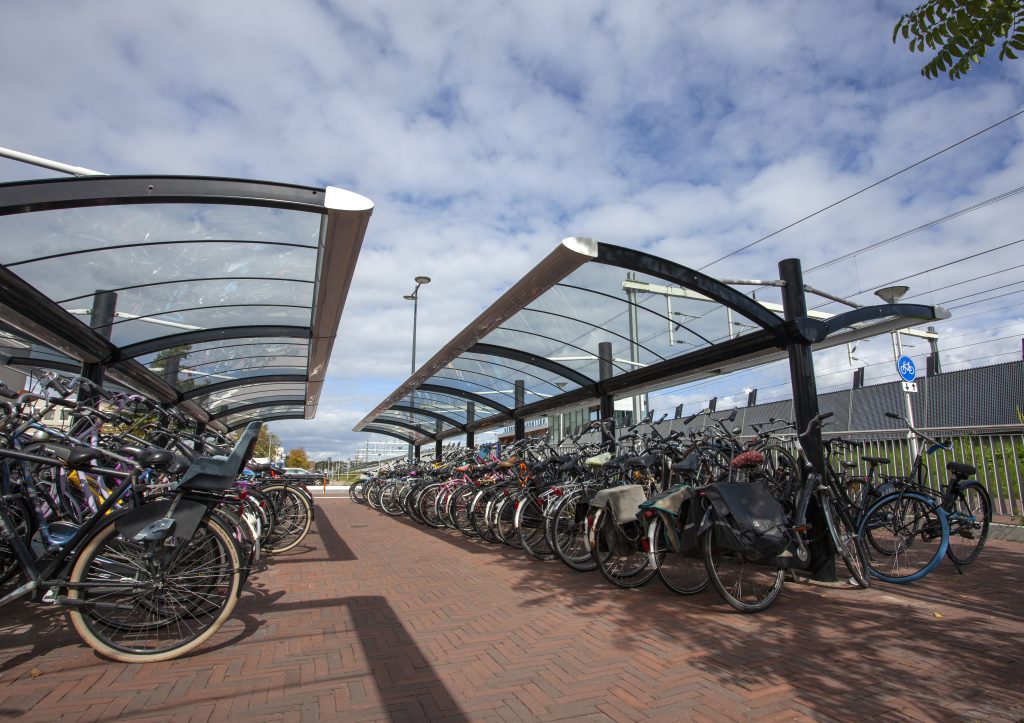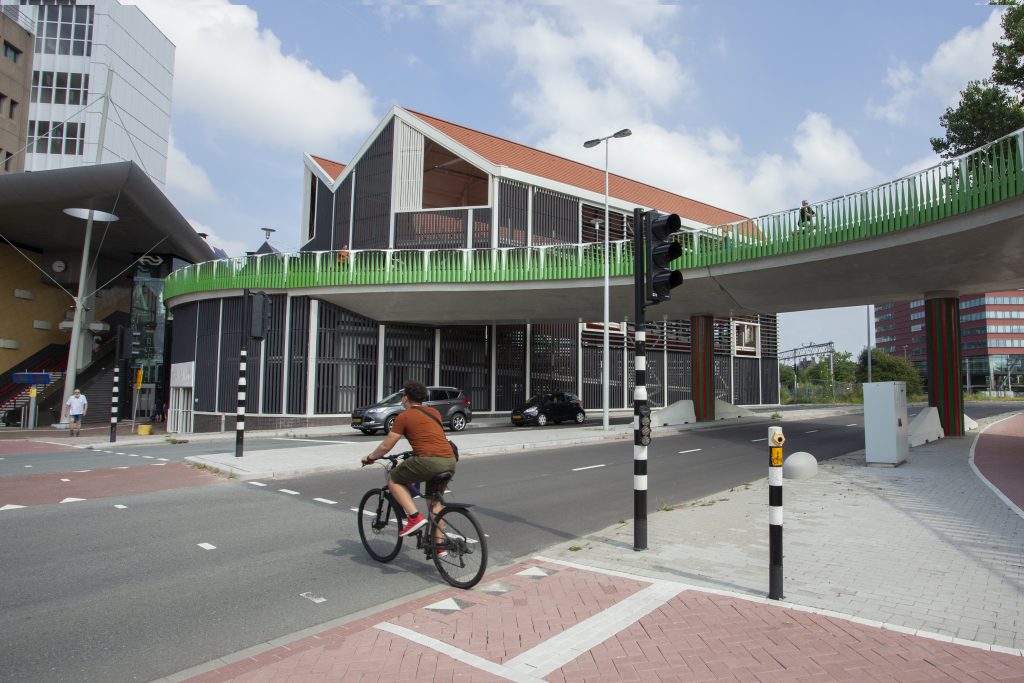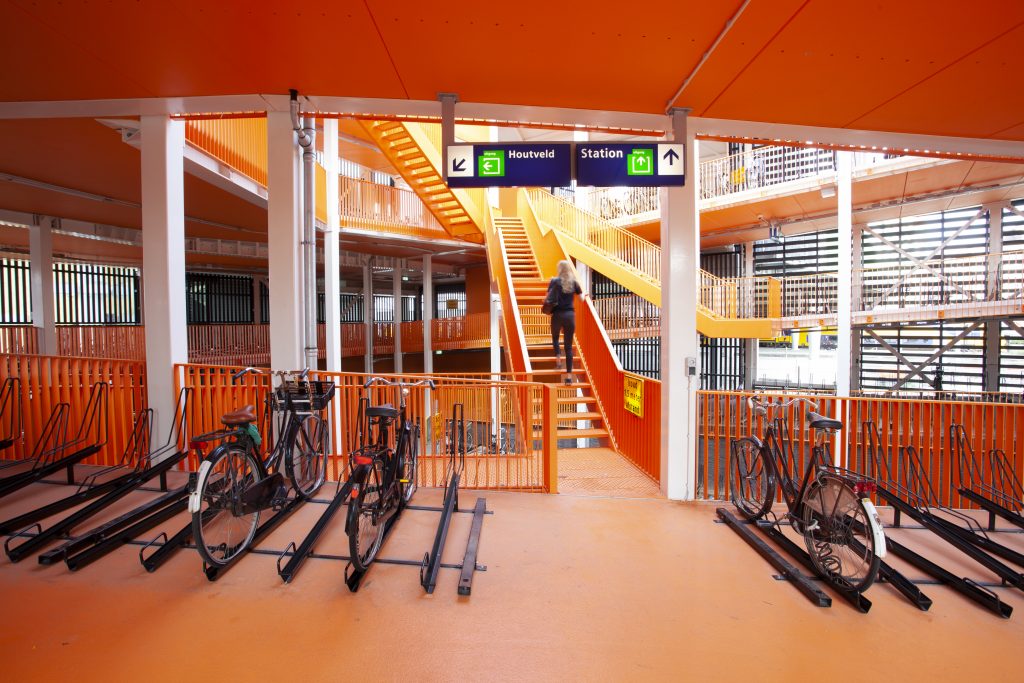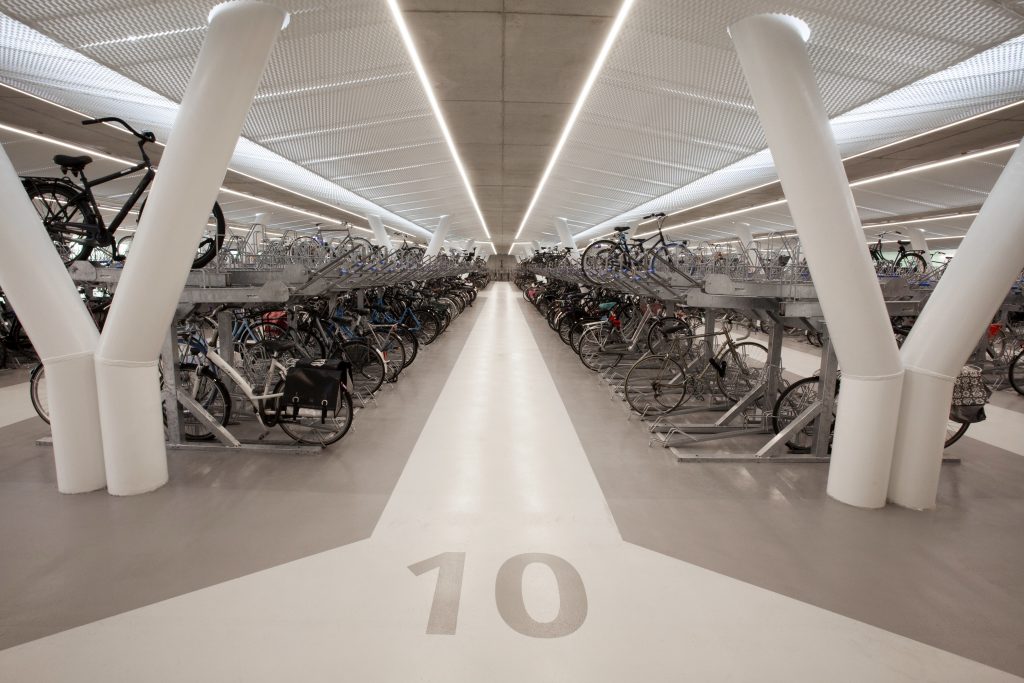In the Netherlands 1,5 million people travel by train each day. Half of the train travellers arrive at the railway station by bike. Approximately 16% of those travellers use the bike to get from the station to their final destination. Because of the growing popularity of the bike and growing consideration for health and sustainability, ProRail expect these percentages in the bike/train combination to rise further. Bike and train is a great combination, so why do so many people choose to commute this way instead of by car?
Bike and train a great combination
So why do so many people choose to commute this way instead of by car? In the Netherlands the average travel distance is relatively low. There are a lot of train stations. Trains run at quarter of an hour intervals. Cycling infrastructure for cycling is at a high level. Cycling as a way of transport is part of the DNA of the Dutch. All these facts combined lead to huge numbers of cycling to and parking at railway stations. So the bike/train combination is a competitive way of transport in the Netherlands. Also, it is a more sustainable way of transport because where bikes are mainly muscle powered, trains run at electricity from wind turbines. Studies also show improved health as a result of physical exercise from using a bike or walking to your destination as a conclusion of the journey. Thus resulting in more liveable cities, less polluted by exhaust gases. ProRail provides parking space for bikes at railway stations, funded by national and regional governments.
Every station in the Netherlands has one or more bicycle parking facilities.
We have bicycle parking facilities at street level (‘ground-level parking facilities’), indoor and underground facilities and one mega-facility. The largest – the Stationsplein parking facility at Utrecht Central station, opened in 2019 – has a staggering 12,500 bike spaces and as such, it became the largest bicycle parking facility in the world. We now have a total of more than 500,000 bike spaces at stations in the Netherlands and we will hit at least 600,000 in the next ten to twenty years. Nowhere in the world the bike/train combination has become so successful and it comes as no surprise that the quality of bicycle parking facilities at Dutch stations plays a big role in this.
Challenges and opportunities
Furthermore, bike sharing systems and technology is being piloted. Goals are to assess in which way interoperability can be implemented, and which part of privately owned bikes can be reduced in the parking facilities when people use bike sharing. We hope to be able to use available space more efficiently that way. ProRail strives to implement as much sustainability and circularity in its projects as possible. This means performing life cycle analysis, using LED as light source, creating ‘green roofs’ which buffer rainwater, re-using old window glasses from train etc.
Over the years, we have come to know our parking customers well and we know what matters to them:
Proximity: The thing that cyclists making their way to the train want above all is a logical approach route and the ability to park their bikes as close to the platform as possible. Through studies on the origin and destination, parking pressure studies and customer surveys, we gain an insight into the routes covered by cyclists, their parking motives and the side of the station through which they enter and leave.
Guaranteed space: Travellers always want a space to park their bikes. Every station in the Netherlands has one or more bicycle parking facilities and we use capacity prognoses to find out in time if we need to extend parking facilities. We have to become increasingly creative because space is becoming scarcer, meaning we also build underground, stacked, underneath the railway tracks and even under water. Or we transform car parks into bicycle parking facilities.
Safe: Being able to park your bike safely is one of the basic requirements also mentioned in ProRail’s Design Regulations. Not only do you want your bike to still be there (and in one piece) when you get off the train, but you also want to feel safe in a parking facility. Thanks to the quality improvement of bike clamps with securing options, theft and vandalism figures are falling and bicycle parking facilities in the Netherlands are considered safer.
A good flow: Route logic and efficiency are now an important factor in the design of parking facilities; travellers are in a hurry and want to catch their trains. Thus, space and layout of the facility must be geared to this, and walking around unnecessarily must be avoided to the greatest possible extent.
Comfortable: Comfort and convenience are two similar concepts that matter to customers. We use uncluttered ground-level parking facilities, a fast check-in and check-out system and static and (in larger facilities also) dynamic signs of the digital bicycle parking system that makes it easier to find an available space. We also take into account bikes of deviating models, such as bikes with crates or child seats, cargo bikes and bikes for the disabled.
Free of charge: Most bicycle parking spaces in the Netherlands can be used free of charge and are located in parking facilities at street level. In a great number of guarded parking facilities is the “every first 24 hours free” scheme valid, so that users will not pay until the second day of parking. From a customer perspective, this is a successful formula because most of us only park our bikes for one day, while there are still some revenues out of second day (and more) parking.
Dry: Cycling travellers like to have a dry saddle when they return to their bikes. In the case of indoor and underground parking facilities, most bike flats and ground-level facilities with roofs and bike lockers.
Service: According to the Dutch Cyclists’ Association, quality has improved during the past twenty years because operators apply service formulas for their guarded parking facilities and they employ service staff who contribute to customer satisfaction and a focus on service.
Mark Loonen, Rail System Engineer ProRail explains how ProRail accommodate as many bicycle racks as possible for train travellers.
To watch the video 👉 https://bit.ly/3wiNC22
Would you like to know more about how ProRail accommodate as many bicycle racks as possible for train travellers? Look at 👉 http://prorail.nl/reizen/stations/fietsen

‘Ground-level’ bike facility at Utrecht Lunetten station ©ProRail

The bike flat facility ‘De Droogschuur’ at Zaandam station (a) exterior ©ProRail


Underground bike facility ‘Koningin Julianaplein’ at Den Haag Central station ©ProRail

LED light source in bike facility ‘Strawinskylaan’ at Amsterdam Zuid station ©ProRail

